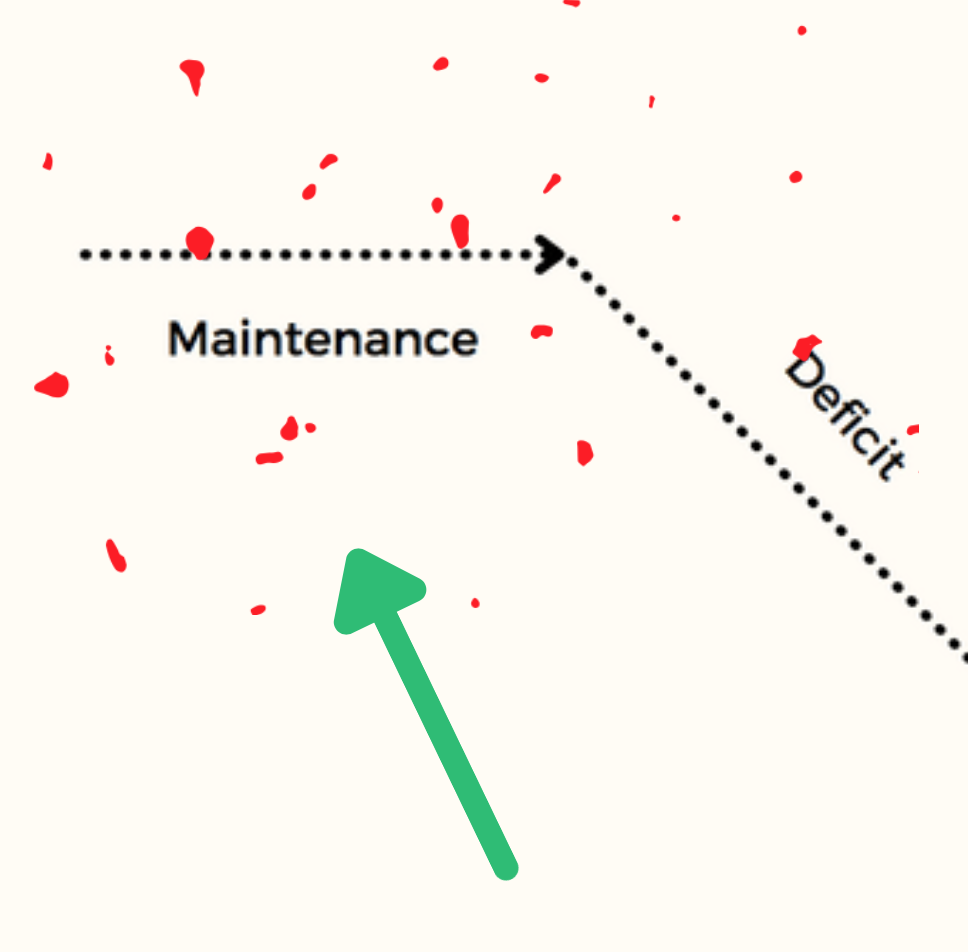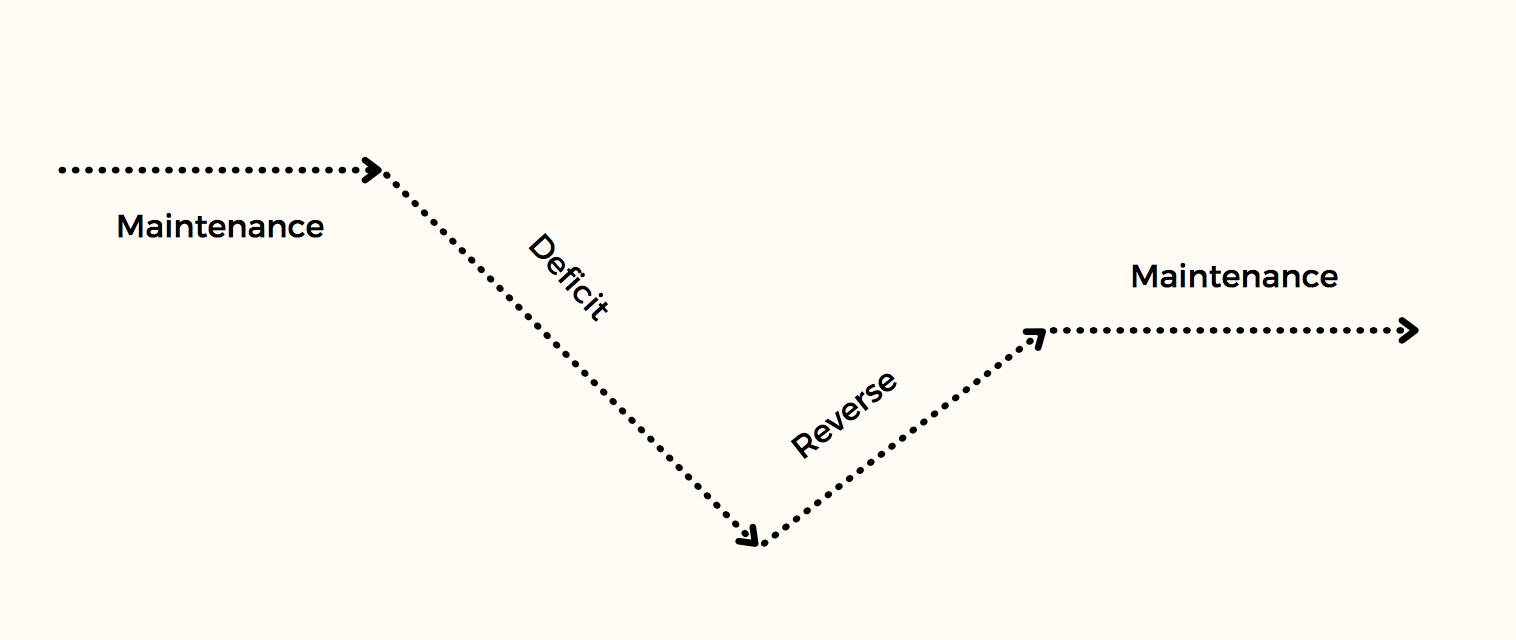Diet periodisation: What is it and how to do it.
The when, how and why of periodisation.
You may have heard of the term ‘diet periodisation’ knocking around the health and fitness industry and may be wondering what it is and whether it’s for you.
In this blog I’m going to break down what it is, who it’s for and how to do it.
Chances are if you’ve made it on to my blog, you are an athlete, or at least an aspiring one. You likely take your training seriously, which also means you probably train in blocks or mesocycles.
Periodising your diet, is exactly the same thing. It means dedicating each cycle for one specific goal; cutting weight, maintaining weight, or bulking for muscle gain.
This is important for a few reasons:
It isolates each goal so that you can focus on getting a specific result faster
For cutting weight, it often means (when done right) you decrease your likelihood of losing muscle
You’ll have an exit strategy so you aren’t bomb diving into a bucket of ice cream when the phase ends
I see so many athletes going in and out of diets without a clear plan only to come out the other side feeling more frustrated with the results. They’re either too hungry to continue on the “diet” or don’t see results at all.
This is often because the “results” aren’t defined at the start of the process. Often people want to lose weight and gain muscle at the same time. You can’t do both….. technically you can, but that’s very rare and you would need a few factors all lined up in order for that to happen.
Choose one or the other. Don’t try to do both.
To change your body composition, you need:
Clarity on exactly how many grams per body weight of each macro you need to consume
Clarity on when to drop which macro
A plan as to how long exactly each phase should last
Failing to plan is planning to fail…
Strategy strategy strategy
In my experiences as a nutrition coach…
Most people eat like those red dots. There is no consistency, some days they are over eating, some days they attempt to damage control and purposely under eat.
Eating well on maintenance is a skill that involves checking in with your internal cues and learning to respect those signs of hunger, but that’s another blog post entirely.
What are the stages involved in periodising?
When done right, periodising your diet should include the following phases: a maintenance, a deficit (or surplus depending on your goals), and a reverse.
Each cycle (meaning the whole process which includes all three phases) shouldn’t last for more than 3 months, and that’s one mesocycle completed. Maintenance should be the bulk of the work, meaning that before after after each weight loss or weight gain phase, you’ll want to reverse into a maintenance phase for a good amount of time before repeating the process again.
Why can’t you just sit on a deficit until you hit your weight loss goal?
When you ‘diet’ for too long, you run the risk of slowing down your metabolism. Not fun.
Even if you have’t hit your weight goal you should reverse back into maintenance. Riding it out on a nice and long maintenance will prime your body for the next ‘cut’ if and when you choose to enter another one. You’ll be giving your body the break it needs, bring your metabolism up to par, not to mention it’ll probably do you some good mentally too.
So often I see people entering deficits that are either too low or too long. This can result in weight plateau or worse, your performance suffering and your mental health in tatters.
Let’s look at each cutting phase mapped out clearly.
When starting out any cutting phase you should always come in at a maintenance, just to get your body used to eating consistently; eating in the right amounts that coincide with your training patterns. This is important, and it has nothing to do with how intense a workout feels.
Defining your training volume correctly is going to go a long way in keeping that weight off. Crossfitters I am talking to you. One gassy workout that left you seeing stars but only lasted 15 minutes isn’t going to require 2 bowls of spaghetti.
Once you’ve practiced some consistency on a maintenance level, you can then begin to drop some calories. For more information on how to cut back on calories read this blog about counting calories for weight loss
Periodising your diet shouldn’t be about overall calorie deficits either (dropping all of your macros evenly), doing so can affect your performance. In other words, you’ll want your macro ratio to stay fluid, some days are higher carb intake days, some are lower.
When it comes to cutting weight but also maintaining performance, you’ll want to make sure you keep your carb intake high enough to sustain you during those training sessions.
How do I periodise my diet?
Pick a goal; do you want to lose fat or build muscle
Once you’ve picked a goal, find out what your maintenance calories are here then stay consistent. Choose mostly whole foods, eat enough protein, add vegetables to every meal, and get used to tracking your food intake through journalling, using an app, whichever method works for you.
Adjust the numbers
Once you’ve practiced the basics of tracking and learning to stay consistent for a few weeks, begin either dropping or adding calories, depending in your goals. Ideally you want to go slow, adding or dropping only 250 calories at a time. Ride out those numbers consistently and when you experience a weight plateau for a few weeks, add or drop another 250 calories.
Progress in 250kcal increments
If you are cutting weight drop your 250 calories in fat macros and if you are gaining muscle add 250 calories in carb macros. I can’t stress enough here how important keeping a food and training journal will be in tracking how your body tolerates the drop in macros. Because I believe in whole health and sustainable results I usually recommend athletes cut 250 calories at a time. You can certainly do more if you can tolerate lower deficits, but personally I’m not a big fan.
Rinse and repeat
Repeat the process of slowly dropping fat macros, but never allowing your body to ever go below 0.3g of fat per pound of body weight.
Reverse
Once you’ve been in a deficit from anywhere between 10-12 weeks you can begin to reintroduce the calories back, reversing the process as you go.
New maintenance
If done correctly you should now be sitting at a different body weight and ‘set point’, but you’ll still want to reverse into maintenance whether from a weight loss or a muscle gain plan.
Live happily ever after…
But no seriously, like weight loss is the key to happiness right? This is where you’ll remain for as long as you want. I know many athletes that ‘cut’ once and maintained for years. This is a personal choice, but if you decide to enter another deficit again, make sure that you maintain for at least 2 months before entering another deficit so that your metabolism can regain it’s stability.
How often can I do this?
It depends.
It depends on your current body composition, your current physical health, and well…. your mental health.
Most athletes will probably go through periods of bulking and cutting depending on whether it’s off season or not. You can go through a couple cycles per year and I would encourage you to plan it out 12 months at a time if you do choose to cut more than once a year.
The reason why I do this is because it highlights the fact that body composition goals are long term.
Losing weight fast can often mean gaining it back fast. But if you took a long term goal, then it might encourage you to take your time and ease into it so that the results are little more sustainable.
Aim for 2-3 cycles per year at the most. Pick a goal, commit to it and stick it out until the end. Don’t change your mind after 2 weeks and decide that because you aren’t seeing any results you want to try a different plan.
Consistency is the name of the game here.
The power of maintenance
I’m a big fan of maintenance. Most likely you don’t really need much more than a solid maintenance plan. Remember, a good solid maintenance plan outlines exactly how much you need to eat in order to sustain your training volume and over time change your body composition. Most people think maintaining weight is just about eating what they want and not losing weight. It has to be a clear plan that sustains your body enough for training, and fuels it in the right ways.
Maintenance is a great place for you to focus on strength and power and maybe even getting those PR’s. The power of maintenance doesn’t stop there, this is the period in which you want to be honing in on those basic skills like learning to stay consistent, tapping into your physiological cues like feeling hungry or full.
If you find yourself rushing to move on to the next ‘cut’ and not enjoying maintenance, check in with yourself and ask ‘why'. Remember no judgement there, just noticing any anxieties around allowing yourself to eat more food.
A word of caution…
If you have been following me for quite some time on social media you’ll know that all my programmes are based on your whole health. I don’t just help athletes lose weight, but I help them do it a way that is both sustainable and helps them stay sane.
So with that said, I wanted to end this blog by reminding you that while it’s totally normal to have body goals and to want to improve yourself, please remember that you can achieve all these things but all bodies are different.
You can absolutely change your body and alter its fat to muscle ratio with the right strategy but you might not be able to build delts like Arnie. So just a friendly reminder to be realistic with your goals and to practice some self compassion.
Peace out.
x




